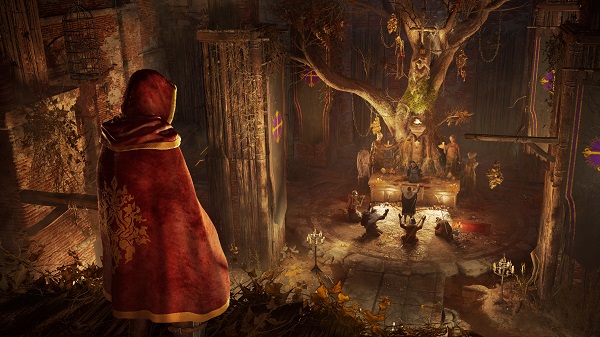Like Assassin’s Creed Valhalla: Wrath of the Druids, Assassin’s Creed Valhalla: The Siege of Paris includes a lot of the same pleasures and pitfalls. The original Assassin’s Creed Valhalla was comparable to Assassin’s Creed Odyssey, which was similar to Assassin’s Creed Origins. I realized early on in The Siege of Paris that I had another 15 hours of fighting, sneaking, and riding from waypoint to waypoint ahead of me, and it seemed like a chore rather than a delightful diversion for the first time.
Except for Ubisoft’s now-famous launch day faults and flaws, there isn’t much wrong with The Siege of Paris from a technological sense. It’s still a solid open-world action/adventure game with a good balance of stealth, combat, and exploration. There’s not much The Siege of Paris can supply that Assassin’s Creed fans haven’t seen before after a complete game, a hefty expansion, a handful of limited-time events, and a healthy serving of free DLC.

What’s new?
You’ll take control of Eivor, a Viking leader and European explorer who has traveled to Norway, Ireland, England, Canada, and even the mythical world of Asgard in his continued adventures, similar to Assassin’s Creed Valhalla and Wrath of the Druids. This time, the action is set in the medieval Frankish realm of Francia, notably in the regal city of Paris and its environs.
You’ve heard the story: Eivor journeys around the European countryside on foot, horseback, and on a longship. He goes on storyline missions, which sometimes entails dispatching enemies invisibly, other times entails open battle, and still, others involve solving simple environmental riddles. He’ll also find a number of side tasks and collectibles to do. For both the main and optional tasks, the gameplay loop is nearly identical.
While The Siege of Paris follows the same gameplay mechanics as the core game and Wrath of the Druids, it adds two new features: rebel missions and black box assassinations. The first is a little rote; the second may be a lot of fun.
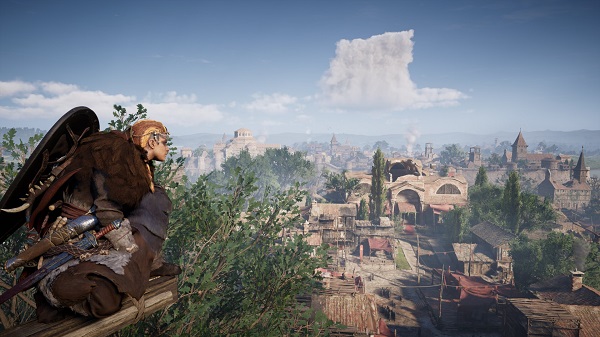
In the rebel missions, Eivor and a small group of AI-controlled comrades are tasked with pursuing Frankish forces. It’s possible that you’ll have to assassinate specific targets, clear out a fort, or waylay a convoy, but it’ll almost always end in open combat. You earn currency by completing goals successfully, which you may spend to enhance your teammates or purchase collectibles. Over time, your level of infamy will rise, providing you with higher rewards. The story requires you to fulfill various rebel objectives, but it isn’t that exciting.
Assassin’s Creed Unity and Assassin’s Creed Syndicate’s black box assassinations, on the other hand, are a welcome comeback. Eivor has three alternatives when it comes to assassinating a high-profile target. He has three options: rip a bloody path through the surrounding area, find an unguarded door and sneak past the opposition, or complete certain side missions to unlock a one-of-a-kind assassination chance.
For example, to assassinate a corrupt priest, I had to rescue a local girl, go through the sewers, fight off a group of robbers, open a concealed entry inside a church, and disguise myself as a penitent. It was far more interesting than simply plowing through his underlings, though I recognize that I could have done so as well. These improvised assassinations harken back to early Assassin’s Creed games when stealth was emphasized.
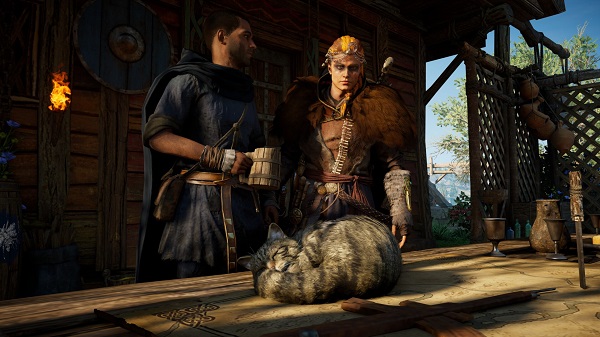
However, it’s easy to forget that Siege of Paris isn’t Assassin’s Creed Valhalla’s first significant DLC. We’ve had one more major expansion, periodic festivals, battle challenges, river raids, and plenty of more weapons and armor since finishing this massive game. (In The Siege of Paris, you can finally utilize one-handed longswords, which aren’t really fascinating given the game’s already extensive weapon selection.)
The truth is, if you play The Siege of Paris after all of the free and paid Valhalla material we’ve gotten up to this point, you’ll not only be severely over-leveled but you might also be burned out on the game’s features. If you’ve completed the game up to this point, you’ve spent between 100 and 150 hours with it – and if you haven’t, you still have a lot of stuff to grind through without having to pay for The Siege of Paris. I’m not sure how many people will want to play this addition, given that only approximately a third of Valhalla players have progressed far enough to reach the expansion’s recommended minimum power level (200).
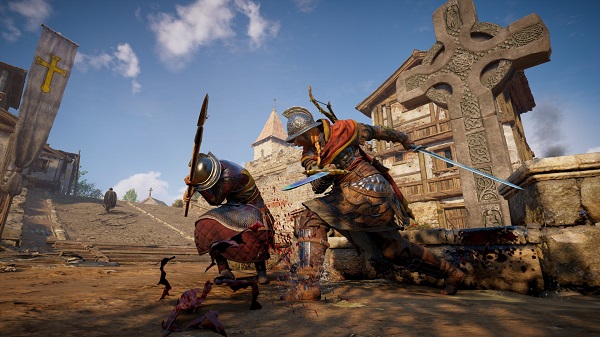
Story
Assassin’s Creed Valhalla: The Siege of Paris retells — well, the historical event in question is fairly obvious from the title. It does an excellent job of sketching up all of the important players, from the hostile Viking war leader Sigfred to the haughty French king Charles the Fat, as previous Assassin’s Creed entries have done.
Charles is a unique enemy in that he isn’t completely opposed to making peace with Eivor; otherwise, the characters and story are very similar to what we saw in Wrath of the Druids. (An ambitious king, a Viking lord seeking power, family conflict, and so forth.) There’s nothing wrong with The Siege of Paris’s narrative, but you can certainly predict all of the key plot twists ahead of time if you know anything about medieval European history.
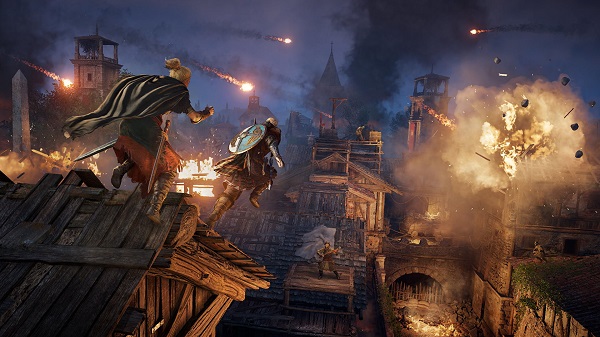
Visuals and Sound
Since the release of the original game, the visuals and sound in Assassin’s Creed Valhalla: The Siege of Paris haven’t improved much. I played the game on PS5 and felt the color pallet was stunning, especially when seen on a 4K TV with HDR support. Although the graphic style is a bit dreary in general, the characters appear realistic and distinct. Francia resembles England and Ireland in appearance, with its rocky hills and small towns. In Assassin’s Creed Unity, Paris appeared a lot more magnificent, though that’s not a fair comparison because Unity took place in the 1790s, meanwhile The Siege of Paris takes place in the 880s.
Similarly, the music and voice acting are both excellent, notably Magnus Bruun Nielsen and Cecilie Stenspil’s performances as Eivor’s male and female versions. They’ve recorded dozens of hours of dialogue between them and still manage to give the character life and emotion. However, after the lovely Irish harp work in Wrath of the Druids, I was a little surprised that The Siege of Paris didn’t have anything musically as inventive.
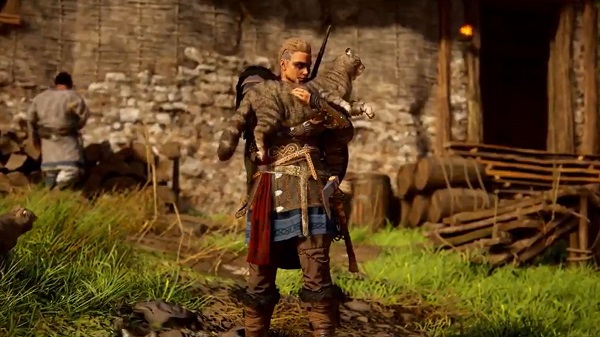
Verdict
Assassin’s Creed Valhalla: The Siege of Paris is the same, which may not be a glowing recommendation if you’ve already spent more than 100 hours in the original game and its previous DLC. I had a great time with The Siege of Paris, and I was eager to put it down once I was finished playing each night.
The problem with Assassin’s Creed Valhalla DLC is that, after such a large core game, each additional package has to prove its worth. The Siege of Paris offers extra content, although it isn’t very different from the previous game. I’m sure there’s a small group of people that can’t wait to raid more camps, climb more views, and upgrade their armor. But I’m sure that even the most ardent fans of Valhalla have had their fill by now. It makes me wonder if the future Assassin’s Creed Infinity would be enjoyable to play every day, forever.
